Landscape architect Kunal Maniar is a perfectionist, a purist in the true sense. There’s something infectious about his confidence, attention to detail, and sensitivity towards ecology. He describes his design philosophy as ‘studied negligence’, where nature is handed back the power to assert its own design statement freely. We meet at one of his surreal projects—where the built and the unbuilt seem entangled in a symbiotic relationship. One encounters seemingly uncultivated plantations of bougainvillea, frangipani and palm trees…nature runs wild here.
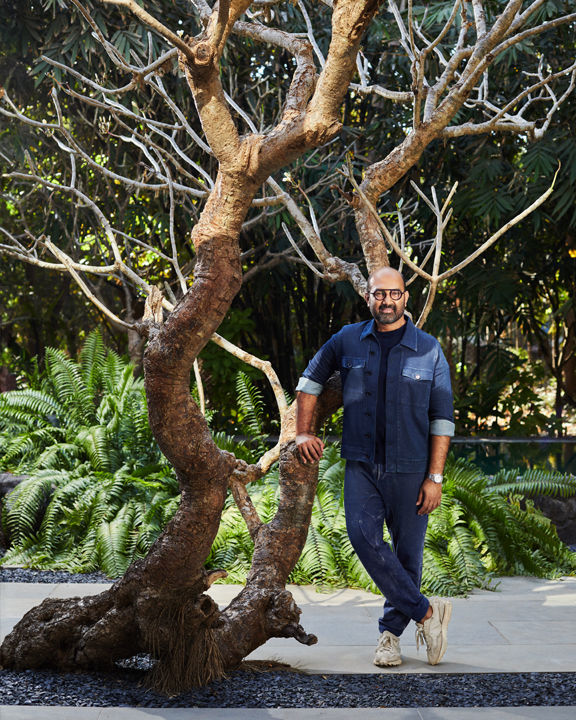
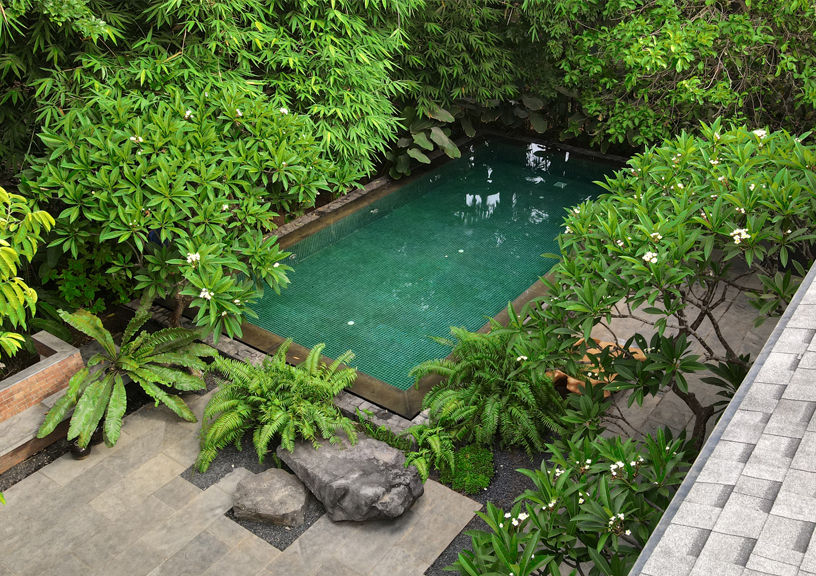
The landscape meanders in and out of the house: It’s a testimony to the spectacular collaboration between the architect and landscape architect. “I was thrilled when Shobhan Kothari from ADND approached me for this project. We were working together on a project after a gap of 8 years. That made it very special,” Kunal says. Whilst an architect envisions fixed forms, a landscape architect must work with constantly changing elements. “The key is to embrace transience, and work in tandem with nature,” says Kunal. He strongly believes that creativity cannot be compartmentalized, and his bespoke landscapes take inspiration from varied disciplines like fine art and craft, product design and even fashion.
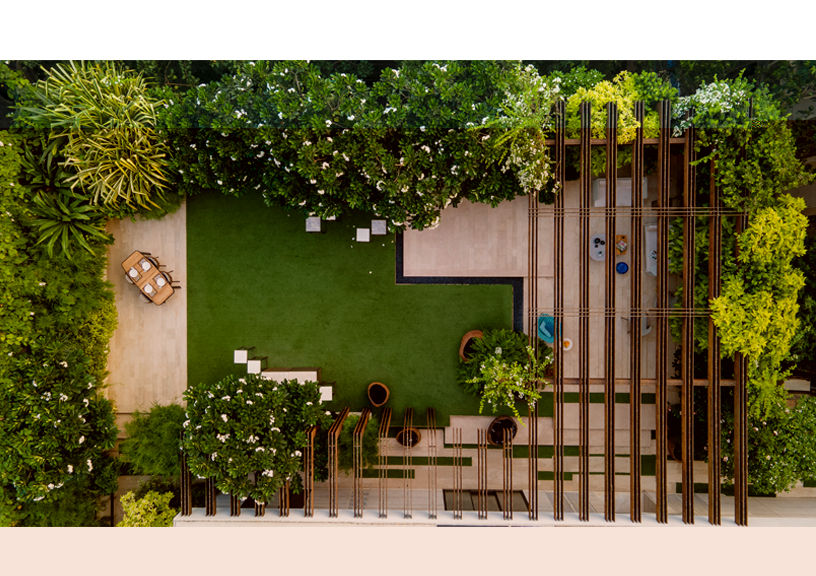
His oeuvre is replete with prestigious clients, most of whom he prefers to keep classified. Kunal has worked on greenspaces for Mukesh and Nita Ambani, Shahrukh and Gauri Khan, Ranbir Kapoor and Alia Bhatt, Mahendra Singh and Sakshi Dhoni. We sit down with this master craftsman to understand what inspires him, and what nudged him towards this incredible journey! Here’s an excerpt from the interview:
The Beginning: Following the Green Route
Seema Sreedharan (SS): Landscape Architecture is an extremely niche segment within the design stream. What veered you towards it?
Kunal Maniar (KM): I grew up in Mumbai with a view of the Hanging Gardens atop Malabar Hill. Living in this city but still being surrounded by lush green trees felt like a privilege. It made me realise the importance of integrating the natural environment back into the urban fabric. This eventually translated into an interest in placemaking, and that’s how I got drawn towards landscape architecture.
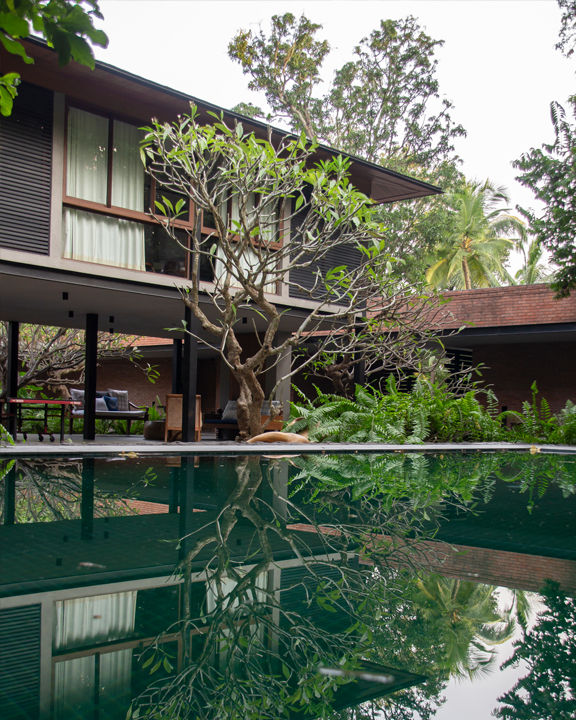
SS: Were you always inclined towards design? Or was there a turning point in your life that encouraged you to pursue design?
KM: I think every human is inherently creative, but we’re all walking different paths in life and some just choose to explore this creative dimension within themselves. You know, oddly enough, I was never even really into sketching, so I’m just grateful to have fallen into this world of design and to be able to create something new with every project. I pursued horticulture after school and this quite organically led me to pursue a postgraduate degree in Landscape Architecture at the University of Melbourne.
SS: Take us through the early span of your career. As a landscape architect was it easy to set up your own practice?
KM: I started my practice in 2002. This was a time when landscape architecture was given little recognition in India, even within the design fraternity. Landscape architects were usually relegated to horticulturists who merely added pretty flowers and lush planting to spaces, instead of being considered as planners of the built environment. A key challenge was to change this misconception, and make interior designers and architects realise that landscape architecture is a specialised, holistic field in its own right.
My first few Alibaug projects were my initial opportunities to get my hands dirty and see my ideas come to life in the form of living art. My core ethos emerged during this phase; I began my journey of experimenting with different making processes and materiality, and became more confident about my design language. Of course, none of this would have been possible without team members like Pandurang Patil, Hamza Barafwala, and Tejas Kathe.
I never interned or worked for anyone after graduating. However, as most landscape projects involve collaboration, I had the opportunity to work alongside many celebrated architects at a young age. I would definitely credit architects like Noshir Talati and Nozer Panthaky, Nozer Wadia, and Pinakin Patel for many crucial learnings during the early stages of my career.
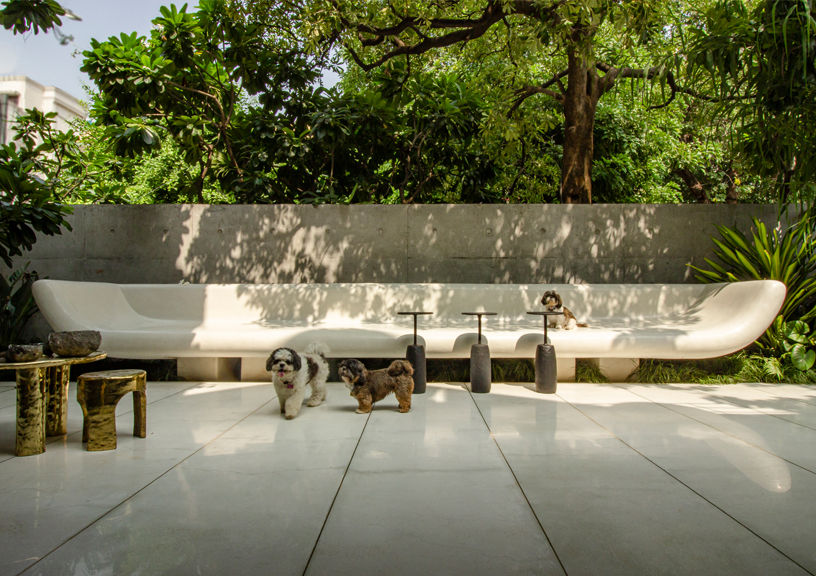
SS: You have worked on some amazing projects. Take us through some of your most memorable projects.
KM: I still clearly recall working on Praful Patel’s private terrace garden at Ceejay House in Worli. We transplanted 40-year-old trees that weighed a ton each, which was a crazy endeavour but we pulled it off. I think of it as a breakthrough, only because it gave our team confidence to think big and not compromise on a vision just because it seems intimidating. An exciting upcoming project is a massive aviary in Delhi, which has been a super interesting experience so far because the primary clients are birds and not humans.
SS: Tell us about the dynamics between the architect, interior designer and the landscape architect. How do you manage when there are multiple strong creative voices involved? How do you balance it?
KM: Over the years I have realised, if you keep your egos in check, if you know as a landscape architect that you must merely play the role of a negotiator, then everything is smooth sailing.
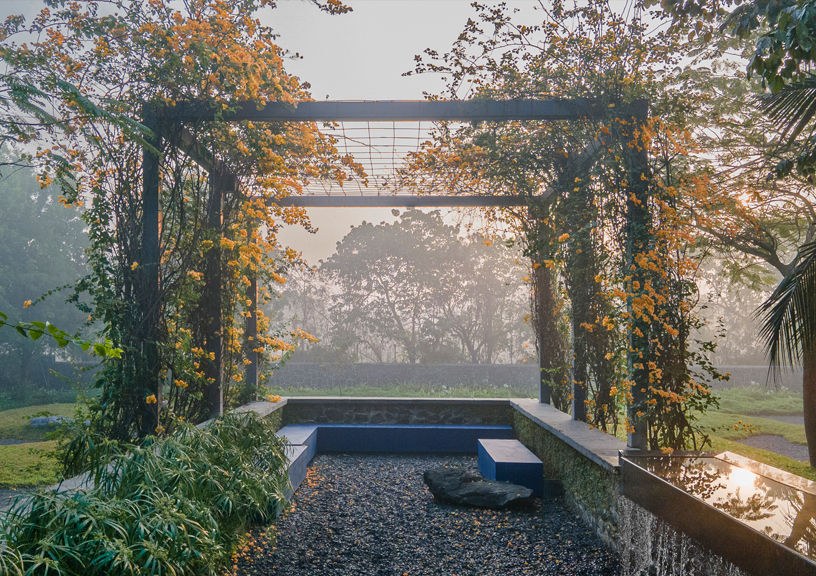
Creating Sustainable Communities: The Role of a Landscape Architect
SS: Sustainable communities are a growing concern for urban planners, designers, and policymakers, who are looking for ways to create healthy, vibrant, and resilient environments. What do you think is the role of landscape architects in creating sustainable communities?
KM: To be very honest, I think the word ‘sustainability’ has just become a marketing buzzword. I think we should be focusing on fostering ecological symbiosis—and sustainability will be an organic derivative of that effort. I think it is crucial that we shift away from gimmicks and look towards genuine, simple, high-impact design solutions to build resilience against the effects of capitalogenic climate change. Landscape design, especially my stream of work in the luxury sector, is often misconceived as a frivolous field, but in reality, mindful landscape planning can be the real game changer in our collective efforts towards sustainability. Whilst planning a site or curating a planting palette, a key question to ask oneself should be: “How much water is this scheme going to require?” It feels unethical that while large amounts of water are consumed by a single family’s sprawling lawns in Alibaug, entire villages nearby have to bear the brunt of water scarcity. Not only is lawn space highly water intensive, it is also expensive to maintain, and the lack of diversity in the soil microbiome ruins soil health. As a rule of thumb, I prioritise dense vegetation, and ensure that no more than 25 percent of a given site is lawn space. Through widespread use of native species and xerophytes like cacti, subscribing to principles of ‘xeriscaping,’ we can save gallons of water.
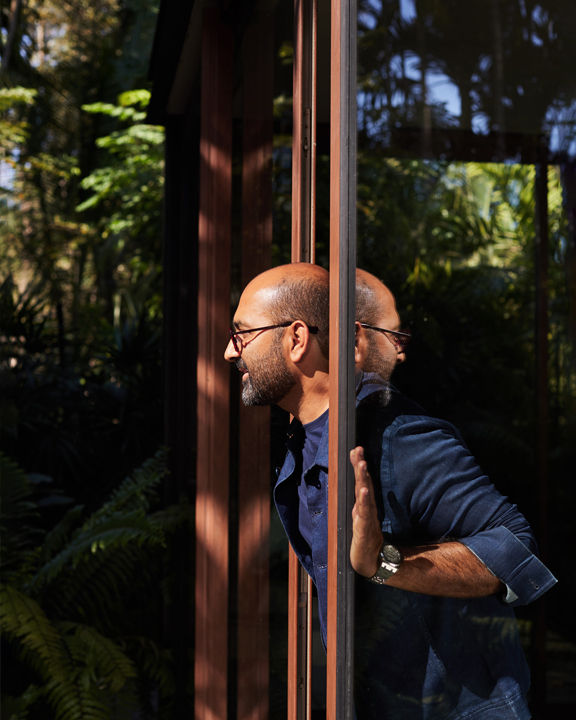
SS: What is Xeriscaping?
KM: Xeriscaping is an inherently sustainable approach to landscape design that requires minimal maintenance, and conserves water. This goes beyond merely using succulents; it also involves prioritising native species, minimising lawn space, and using resource-efficient techniques like drip-irrigation.
SS: Water-management must be a huge component of landscaping? How do you approach this aspect?
KM: When it comes to water management, a vital aspect is thoughtful hardscaping; maximising permeable surfaces allows rainwater to percolate into the soil, recharging groundwater storage and reducing stormwater runoff, which in turn mitigates flood risk. My go-to material for a driveway in an outhouse, for instance, is gravel, but I also like to experiment with different patterns using grass pavers. I wish permeable pavers were more widely used in the contemporary Indian city too, for instance, in Mumbai, where each year the monsoon is a time of struggle for many, and disproportionately affects certain demographics. Currently, most of us prescribe to a system of make-use-throw. Shifting away from a linear model of wasting to a circular economy, wherein the lifespan of materials is extended, is a challenge that the construction industry as a whole needs to rise up to. While zero-waste may seem overly idealistic, I like to think that small efforts could have large impacts if they are turned into the norm.
Over the past few years, I have been actively trying to incorporate simple tactics in my design practice. For example, I have started repurposing construction debris into hardscape material, for instance, crushing waste bricks and using the aggregate as a gravel with a distinctive red colour. Integrating nature into the urban fabric is at the crux of coping with climate emergencies, and improving our collective physical and mental wellbeing. While Elon Musk searches for his billion-dollar carbon capture technologies, I advocate for the obvious, yet seemingly forgotten—plants and trees.
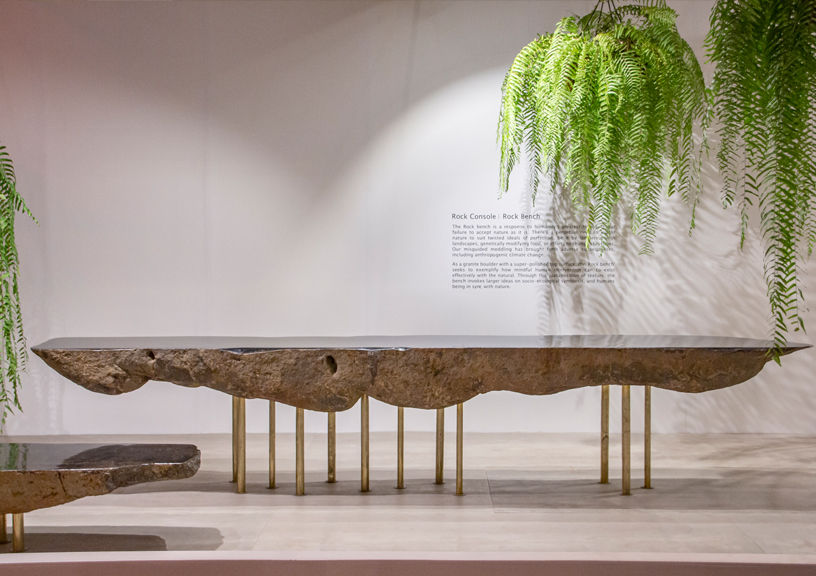
SS: What’s your vision for a city like Mumbai?
KM: There is a dearth of ecologically sound urban planning in our cities; perhaps, this could be remedied through increased collaborations between the government and private landscape practices on urban acupuncture projects. Urban voids and derelict sites could be transformed into pocket parks in every neighbourhood, mitigating the urban heat island effect that we are currently plagued with. In Mumbai, more mangrove parks could facilitate natural coastal protection in light of recent development projects. Could the Bandra Kurla Complex be reimagined as an office park immersed in an urban forest? These ideas are purely speculative, but for a problem as complex as the climate emergency we face, radical change in the built environment is likely the only viable option.
My own work within city limits primarily consists of adopting principles of biophilic design to create terrace sanctuaries for families—meditative environments where plants filter out noise and air pollution and unsightly views of construction. If such green roofs were made a norm, a microclimate could be created via the magical cooling effect that vegetation brings through evapotranspiration. An unfortunate reality is that most people do not have access to such terrace spaces. Access to nature and good air quality have become luxury commodities, which is supremely unfair!
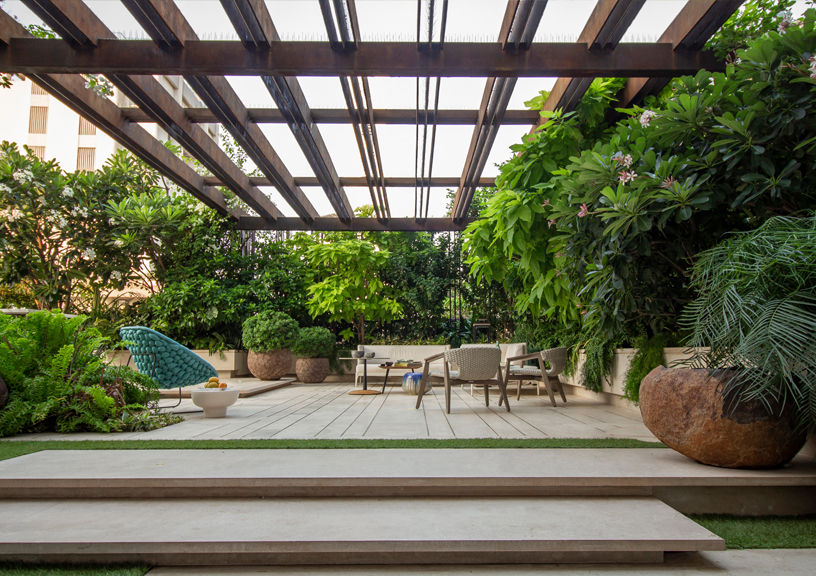
To read the rest of the interview, grab a copy of our June 2024 issue or subscribe to A+D!
Project Photographs: Gajendra Mandrekar
Portraits: Meetesh Taneja
